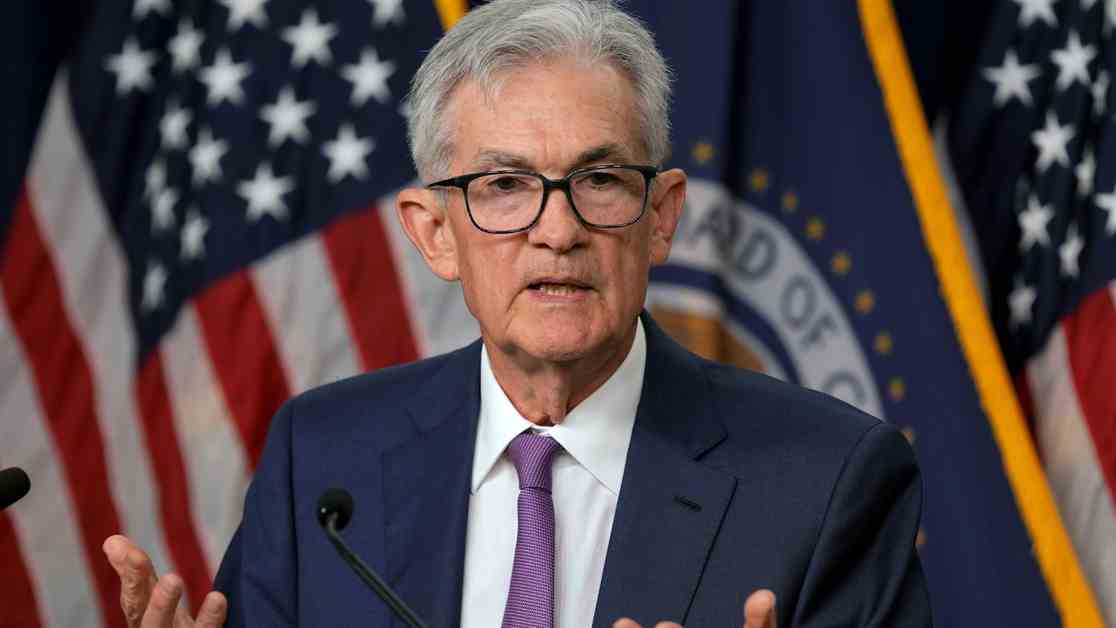Key Factors to Determine Fed’s Rate Cut Timetable
After the Federal Reserve officials convene this week, it is anticipated that the statement they release could indicate substantial progress on inflation this year, potentially paving the way for future interest rate cuts. However, the certainty of this outcome remains uncertain until the actual meeting commences, with the government’s upcoming U.S. inflation data release scheduled for Wednesday morning, just before the Fed’s policy discussions begin.
The pivotal issue at hand revolves around the sentence added to the Fed’s statement following their last meeting on May 1, which highlighted a lack of further progress in achieving the central bank’s 2% inflation target. While inflation rates had surged in the initial months of the year, dampening hopes for a gradual decline as seen in the latter half of the previous year, there has been a slight deceleration in consumer inflation noted in April.
Depending on the findings of the upcoming inflation report this Wednesday, showcasing signs of improvement, there is a possibility that the Fed may opt to remove or modify the aforementioned sentence from their statement. Such a move would indicate a positive development, hinting at a potential reduction in the benchmark rate by policymakers within the next few months. This rate cut could subsequently lead to decreased costs for mortgages, auto loans, and other forms of consumer and business borrowing.
Despite the speculations surrounding the removal or alteration of the mentioned sentence, most economists are inclined to believe that rate cuts are unlikely to materialize before September at the earliest. Chairman Jerome Powell is expected to emphasize during the news conference on Wednesday that the policymakers necessitate further months of subdued inflation readings before contemplating a reduction in the key rate.
A potential Fed rate cut could offer a modest boost to the economy, a prospect that would be favorably received by President Joe Biden’s re-election campaign, given the public discontent over the past inflation spikes. While the consumer inflation rate has significantly moderated from its peak in mid-2022, standing at 3.4% in April, it remains notably above the Fed’s target.
The decision to reduce rates could be expedited if economic growth falters, prompting widespread layoffs by companies. However, the recent report of a robust job expansion in May has led Wall Street traders to revise their projections for Fed rate cuts, now expecting only one cut this year as opposed to two. The Fed is anticipated to maintain its benchmark rate at approximately 5.3% during Wednesday’s meeting, the highest level in 23 years.
Furthermore, updated economic projections to be released by the policymakers are likely to indicate a forecast of one or two rate cuts by the end of the year, a decrease from the initial prediction of three cuts in March. Powell is expected to reiterate the Fed’s stance on requiring more assurance regarding the return of inflation to 2% before contemplating rate cuts, a process that may necessitate additional time.
Addressing concerns about a potential economic slowdown, Powell may highlight the significant decline in growth observed in the first quarter of the year, contrasting sharply with the robust growth experienced in the final quarter of the previous year. The dwindling number of job openings in April, coupled with a reduction in consumer spending after adjusting for inflation, underscores the financial strain faced by Americans due to elevated prices and interest rates.
These tentative signs of economic weakness underscore an ongoing debate among Fed officials regarding the impact of higher rates on the economy. The policy of increasing borrowing costs over the past two years was aimed at curbing spending to contain inflation. However, with doubts arising about the effectiveness of these rates, some officials even entertained the idea of additional rate hikes.
The cautious approach adopted by the Fed towards rate cuts stands in contrast to the actions of some international central banks. The European Central Bank recently announced its first rate reduction in five years, citing progress in curbing inflation. Similarly, Canada’s central bank lowered rates last week, while the Bank of Japan raised rates in response to rising prices after a prolonged period of deflation. The upcoming meeting of the Bank of England on Thursday remains uncertain in terms of a potential rate cut.


